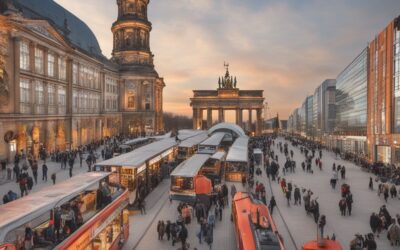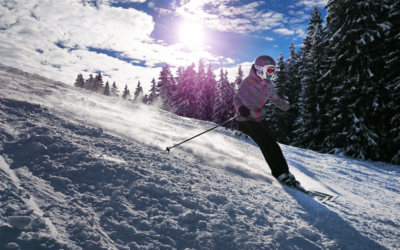Mongolia, often painted as the land of blue skies, remains a treasured enigma in our global landscape. Still boasting its nomadic culture in an age of digital convergence, Mongolia effortlessly marries the ancient and the modern. A key emblem of this fascinating juxtaposition is the Nadaam Festival, widely touted as Mongolia’s own Olympic Games. It’s a cultural fiesta that bears the heart and soul of this country, offering the world a vibrant glimpse of Mongolian heritage. This article delves into the nuances of this dynamic event, providing insights into the traditions that have persisted for centuries.
An Introduction to the Nadaam Festival (Keyword: Nadaam Festival)
Step into the heart of Mongolia, and the air resonates with a unique rhythm, that of the Nadaam Festival. Celebrated with much enthusiasm every July, Nadaam is the most significant holiday for Mongolians, often referred to as the “Three Games of Men” or “eriin gurvan naadam” in the native tongue. However, this title is slightly misleading in the modern context, as women too, have increasingly become part of these Games, albeit in selected events.
The Nadaam Festival is more than just a series of games. It’s a cultural spectacle where Mongolia’s history, tradition, and spirit come alive. It commemorates the independence of Mongolia from China, but more than that, it’s an ode to the country’s nomadic culture. In its origin, the Nadaam Festival was a form of entertainment and also a way for Mongolian warriors to keep their combat skills sharp. These military drills evolved into a festive event over time, adding colorful ceremonies and performances to the games.
Imagine a crowd cheering and gasping in rhythm with the clashing of wrestling champions, the precise aim of archers, and the thundering hooves of horse races. These three major contests – wrestling, archery, and horse racing – form the backbone of the Nadaam Festival. Participants, both men, and women, young and old, compete with honor and valiance, their eyes reflecting the unyielding spirit of Mongolia’s warriors from the past.
The Nadaam Festival also serves as a great unifier. In a country where a nomadic lifestyle is prevalent, and families are often scattered across the vast, rugged terrains, Nadaam serves as a bridge, bringing together communities that celebrate, compete, and connect. Over the years, it has become a beloved tradition that strengthens communal ties and instills a sense of national pride among Mongolians.
As we delve into the details of the Nadaam Festival, let’s start with the first of the three games – Wrestling.
Mongolian Wrestling – A Test of Strength and Technique
Every summer, the steppe of Mongolia transforms into a vast wrestling field, where burly men and now women clad in traditional gear called “zodog” (a vest) and “shuudag” (briefs), wrestle under the open sky. The objective is not only to test strength but also the wrestling techniques passed down through generations.
Mongolian wrestling or “Bökh” has no weight categories, time limits, or age boundaries, making it a thrilling, unpredictable event. A match concludes only when a wrestler touches the ground with any part of his body other than his feet or hands. This unique aspect of the sport reflects the emphasis on strength, skill, and strategy over mere physical dominance.
Consider the tale of Sorokhtoi, a legendary Mongolian wrestler who won the title of “Titan” in 2018. Sorokhtoi was not the biggest or the most physically imposing among the competitors. But he was strategic and technically sound. In a crucial match, he used a clever trick to unbalance his larger opponent, securing his victory. This example shows that Mongolian wrestling transcends the realm of physical sport and enters the territory of mental acuity and strategic brilliance.
The wrestling event of the Nadaam Festival begins with an “Eagle Dance” or “Devekh”, a ceremonial parade where wrestlers imitate an eagle’s flight, symbolizing power and agility. This ritual dance, the vibrant outfits, and the thrilling face-off between wrestlers combine to offer a captivating spectacle that defines the true spirit of the Nadaam Festival.
There is a unique sense of community and camaraderie in these wrestling matches. Each wrestler, regardless of the result, earns respect and admiration, as every bout is a showcase of not only personal prowess but also an age-old Mongolian tradition.
The Art of Archery – Precision and Focus
The second game of the Nadaam Festival that warrants exploration is archery, another skill that had a fundamental role in the lives of nomadic Mongolians. Historically, this skill was essential for hunting and warfare, with archers being a pivotal part of the Mongolian army. Today, it serves as a significant cultural event where both men and women exhibit their prowess.
Unlike the popularly known version of archery, the Mongolian variant uses a recurve bow made from horn, sinew, and wood, making it significantly smaller and more powerful. This compact design allows for a stronger pull and the arrows can be shot up to a distance of 75 meters (for women) and 100 meters (for men).
However, the rules of the competition are far from conventional. The archers aim at hundreds of ‘surs’ or cylindrical braided leather rings, stacked together. The archer who hits the most surs wins the competition. Upon hitting the target, the judges sing a harmonic song known as ‘uukhai’, encouraging and applauding the archer’s skill.
Mongolian archery is a beautiful representation of concentration, precision, and technique. More than just the act of drawing the bow and releasing the arrow, it’s about the bond between the archer and their instrument, the respect for tradition, and the sheer joy of participation. Take, for example, Tsetsegmaa, a female archer who competes in the Nadaam Festival each year. Despite not having won the competition yet, her spirit remains unbroken. For her, participating in the Nadaam Festival is about keeping the tradition alive, celebrating her culture, and showcasing the strength of Mongolian women.
Horse Racing – A Display of Endurance and Speed
The third and final game of the Nadaam Festival is horse racing, a sport that showcases Mongolia’s deep connection with horses. Unlike Western horse racing, Mongolian races are long-distance cross-country events, with courses extending over 15-30 kilometers. What’s even more unique is that the jockeys are children aged between 5 to 13, reflecting the Mongolian belief in starting horsemanship at a young age.
These races are more than mere competitions; they are a testament to the Mongolians’ unparalleled equestrian skills, often honed from when they are toddlers. Despite the tough terrains and often harsh weather conditions, the young riders maneuver their horses with expert ease, a sight that embodies both the innocence of youth and the ruggedness of life on the steppes.
Remember the tale of the young jockey Ganbaa, who, despite losing his way in a dust storm, managed to cross the finish line. It wasn’t just a victory for Ganbaa but also a testament to the resilient spirit the Nadaam Festival embodies.
The Cultural Richness – Beyond Games
While the three ‘manly’ games are undoubtedly the heart of the Nadaam Festival, the event is far more than just that. The festival is a lively tableau of Mongolia’s culture, values, and way of life, reflected in its music, dance, attire, and food. It’s a celebration of everything quintessentially Mongolian.
One cannot discuss the Nadaam Festival without mentioning the Mongolian traditional attire, the “Deel”. Made from colorful silk, cotton, or wool, Deels are worn by everyone during the festival – the participants, spectators, and performers alike. These colorful outfits add a unique vibrancy to the festival and speak volumes about the country’s rich textile history.
In the culinary realm, the festival offers a taste of traditional Mongolian dishes. Whether it’s the “Buuz” (a type of dumpling), the “Khuushuur” (a type of meat pastry), or the “Suutei Tsai” (Mongolian milk tea), the food during Nadaam is as much of a cultural exploration as the games themselves. Amidst the aroma of grilled meats and the warm, comforting smell of milk tea, you can sense the spirit of community and shared heritage.
The Opening Ceremony – A Spectacle of Tradition
The Nadaam Festival officially begins with a grand opening ceremony held in the National Sports Stadium in Ulaanbaatar, the capital city. The ceremony is an awe-inspiring spectacle of color, music, and dance that captivates the hearts of locals and tourists alike.
The ceremony starts with a procession of monks, athletes, soldiers, musicians, and riders on horseback, all dressed in their traditional attire. The president of Mongolia then officially inaugurates the festival with a speech, followed by an array of cultural performances. From the enchanting tunes of the Morin Khuur (horse-head fiddle) and the powerful throat singing to the elegant ‘Bielgee’ dance, the ceremony encapsulates the rich tapestry of Mongolian culture.
Think of it as the opening ceremony of the Olympics, but steeped in tradition and cultural symbolism. It’s an unforgettable experience that stays with the spectators long after the festival concludes.
Traditional Music and Dance – The Rhythm of the Steppe
No cultural festival is complete without music and dance, and Nadaam is no exception. The event features a variety of traditional music forms, the most captivating of which is the “Khoomei” or throat singing. Khoomei is a unique form of singing in which the performer produces a deep, harmonious sound that’s known to mimic the winds of the steppe or the flow of a river. This music, when it fills the air during Nadaam, transports you to the vast expanses of the Mongolian steppe, even if just for a moment.
Similarly, traditional dances like Bielgee and Tsam are integral parts of the festival. Bielgee is a dance form originating from the western provinces of Mongolia, characterized by subtle movements that symbolize household chores and other activities. Tsam, on the other hand, is a religious mask dance that aims to drive away evil spirits. Each dance is a narrative in itself, adding a distinct charm to the Nadaam Festival.
The continuation will delve deeper into the symbolism and significance of the Nadaam Festival in the context of Mongolian society and heritage. Also, we will explore the role of the festival in contemporary Mongolia and the global stage.
Symbolism and Significance of the Nadaam Festival
Every element of the Nadaam Festival, from the games to the ceremonies, carries a profound symbolic significance, reflecting the ethos of Mongolian society and its shared values.
The games of wrestling, archery, and horse racing, for instance, symbolize the three ‘manly skills’ that a warrior needed in the era of Genghis Khan. They represent bravery, strength, precision, speed, and endurance – virtues that were integral to Mongolia’s nomadic and warrior lifestyle. Even today, these virtues hold relevance, embodying the Mongolian spirit of resilience and tenacity.
Similarly, the traditional attire, music, and dance serve as an expression of Mongolian identity and artistic heritage. They symbolize the creativity, craftsmanship, and cultural pride of the Mongolian people. The Deel, for instance, with its vibrant colors and patterns, symbolizes the beauty of Mongolian textile traditions, while the unique melodies of the Khoomei mirror the serene and vast landscapes of the steppe.
The festival food, too, carries symbolic significance. The Buuz and Khuushuur, filled with mutton or beef, represent Mongolia’s pastoral lifestyle, while the sharing of these dishes signifies community bonding and hospitality, central tenets of the Mongolian way of life.
The Nadaam Festival in Contemporary Mongolia
While deeply rooted in tradition, the Nadaam Festival is not frozen in time. It continues to evolve and adapt, mirroring the changes in Mongolian society.
One of the key shifts has been the increasing participation of women in the games. Traditionally, only men competed in the three games. However, women now participate in archery and horse racing, breaking gender barriers and challenging societal norms. This shift reflects the changing role of women in Mongolian society and their growing prominence in public life.
Another notable change is the infusion of modern elements into the festival, be it in the form of contemporary music performances or the use of technology in organizing the games. These changes, while keeping the festival relevant in the modern age, also serve to attract younger audiences and keep the traditional spirit alive among them.
The festival has also gained international attention and attracts tourists from across the globe, contributing to Mongolia’s cultural tourism and economy.
The Nadaam Festival on the Global Stage
The significance of the Nadaam Festival extends beyond Mongolia’s borders. The festival was inscribed on UNESCO’s Representative List of the Intangible Cultural Heritage of Humanity in 2010, recognizing its cultural value and global relevance.
Today, the Nadaam Festival serves as a window to Mongolia’s rich culture and heritage for the rest of the world. Tourists from all corners of the globe flock to Mongolia to witness the festival, immersing themselves in a cultural experience that is both unique and enriching. As such, Nadaam has become a powerful medium of cultural exchange and understanding, fostering a global appreciation for Mongolia’s vibrant traditions.
In conclusion, the Nadaam Festival is much more than a cultural event. It is a testament to Mongolia’s enduring spirit, a celebration of its unique heritage, and a bridge that connects the past, the present, and the world.
We welcome any suggestions or questions. You can email us or contact us using the contact page.
You can also connect with us on the following social networks:









0 Comments